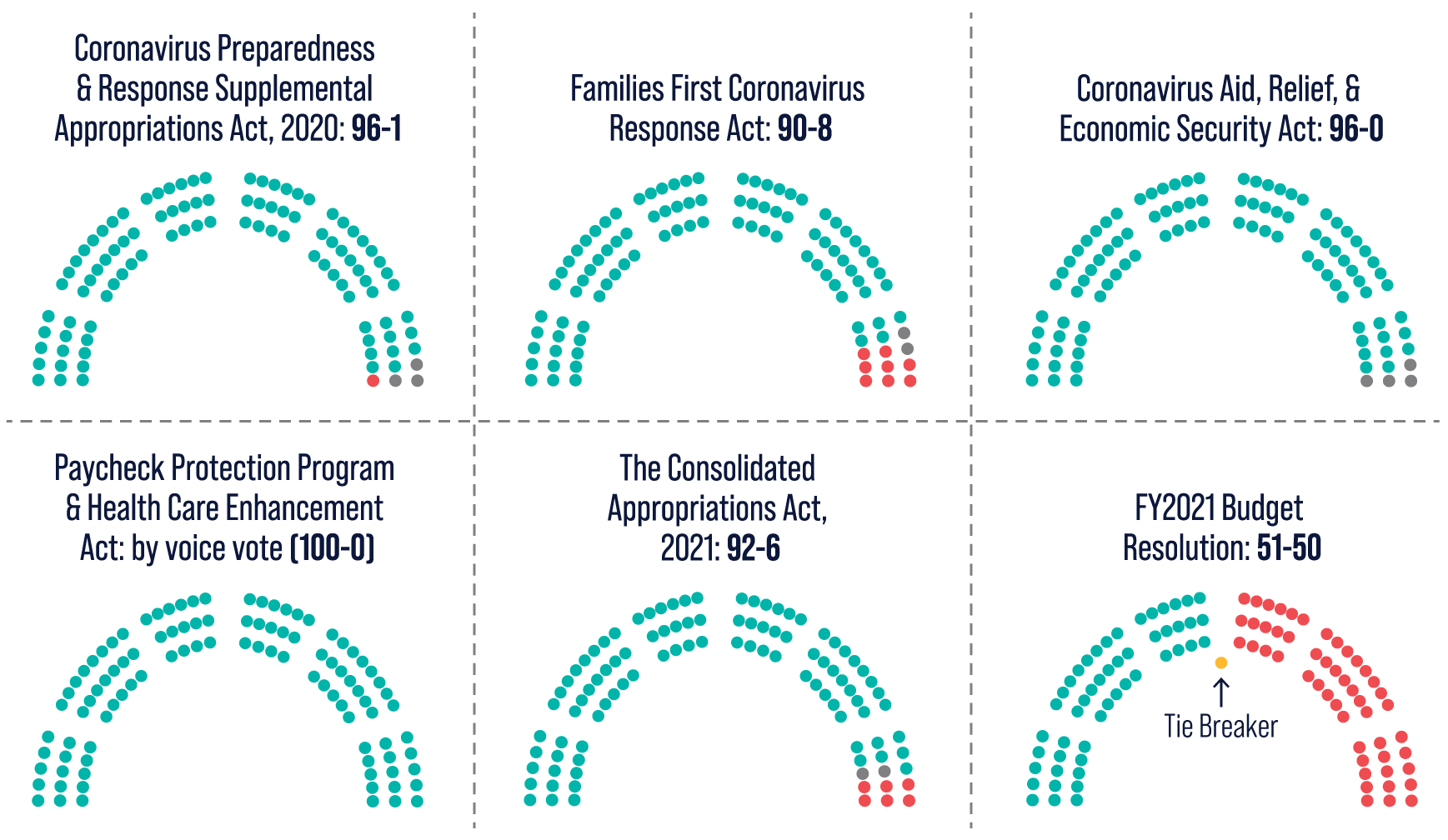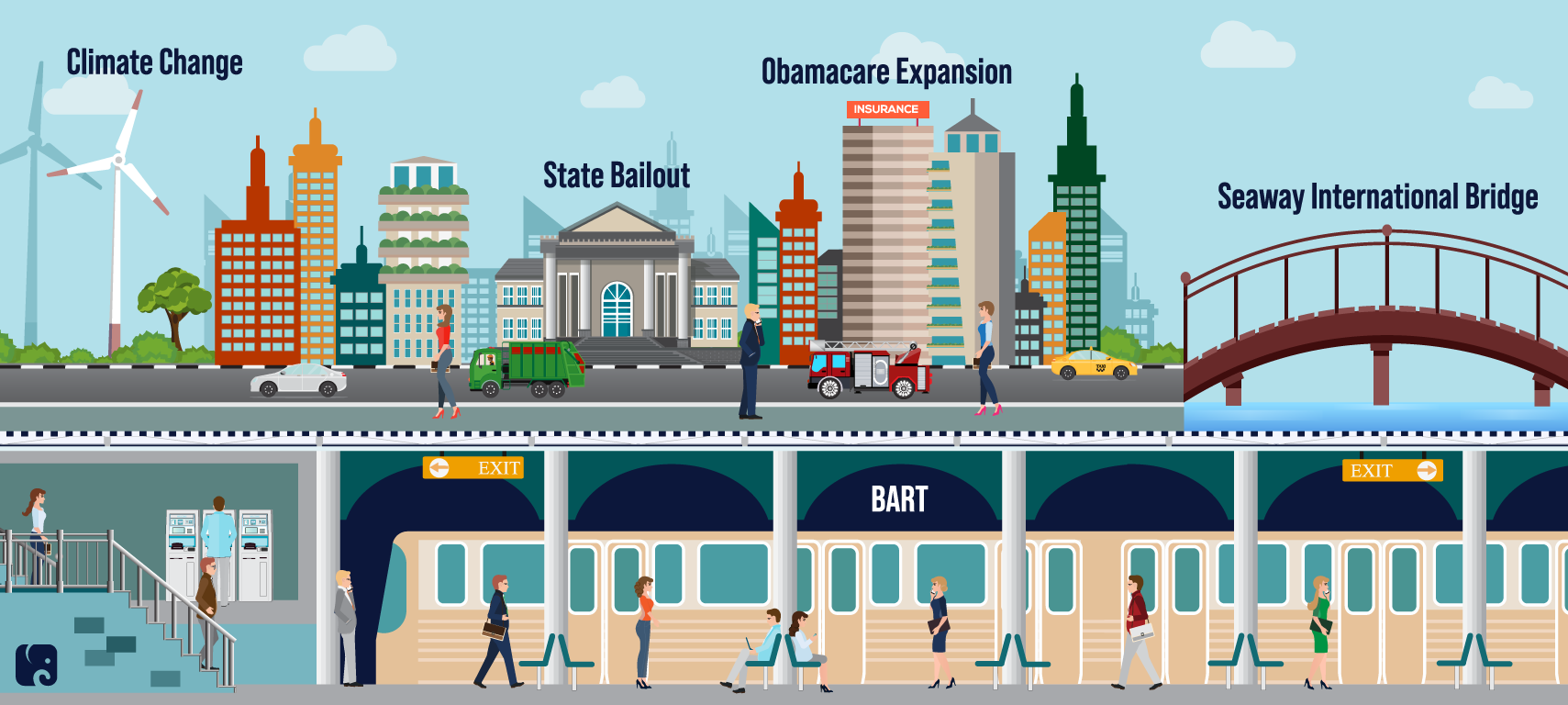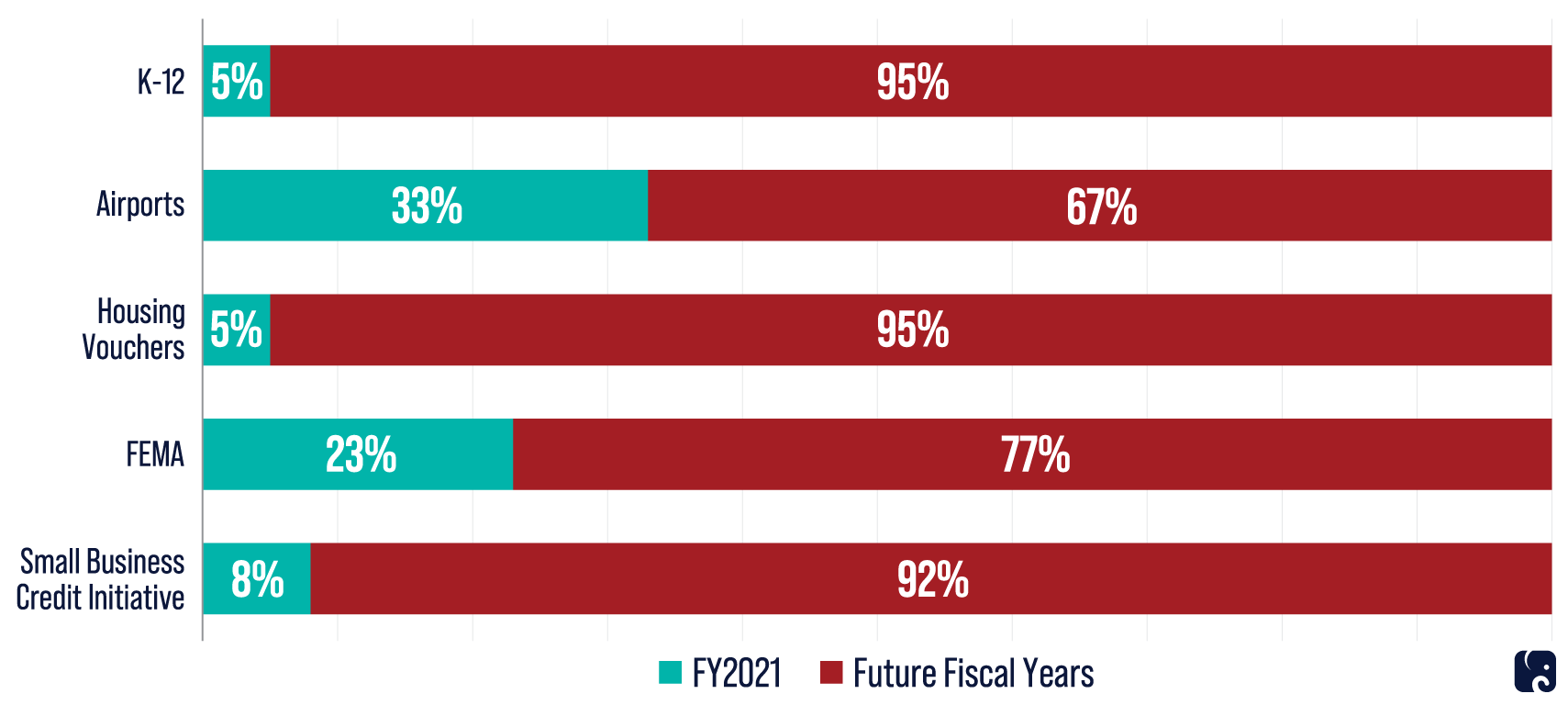Democrats' Partisan Wish List
KEY TAKEAWAYS
- After five bipartisan COVID-19 relief packages, Democrats are now ramming through a nearly $2 trillion liberal policy wish list and calling it COVID relief.
- The Democrats’ legislation would spend hundreds of billions of dollars on untargeted ‘relief’ and advance policies that have nothing to do with COVID recovery.
- According to the Congressional Budget Office, much of the money labeled as ‘emergency relief’ would not be spent for several years.
Over the past year, Congress has taken unprecedented steps to help Americans respond to the coronavirus pandemic. Each of the five COVID-19 relief laws passed the Senate with overwhelming bipartisan votes. Yet, Senate Democrats are now ramming through a massive federal spending bill and calling it COVID relief, utilizing a process that circumvents bipartisan cooperation. Not a single House Republican voted for the nearly $2 trillion bill, and not a single Senate Republican voted for the fiscal year 2021 budget resolution that began the partisan reconciliation process.
Smashing the Bipartisan Approach to Relief

The Democrats’ $1.9 trillion legislation would spend hundreds of billions of dollars on untargeted ‘relief’ and advance policies that have nothing to do with COVID recovery.
Democrats’ Non-COVID Fantasy Land

The House-passed ‘relief’ bill includes more than $100 million for a Bay Area Rapid Transit project to run a subway between San Jose, California, and Santa Clara; $50 million for so-called climate justice; and $1.5 million for the Seaway International Bridge in New York.
The bill bails out states, to the tune of $350 billion, even though many of them ended the year with stronger-than-expected revenues. A recent analysis from Moody’s Analytics concluded that, after accounting for federal aid already provided, 31 states will have no revenue shortfall at all, and net shortfalls across the country will total just $56 billion. A J.P. Morgan study found that for all of 2020 the weighted average decline in state tax receipts was just 0.06%.
The bill increases the value of Affordable Care Act subsidies and expands eligibility for them through 2022.
It was just two months ago that Congress passed $900 billion in COVID-19 relief. A lot of that money hasn’t been obligated yet. And while some of the funding provided over the last year has been obligated, some of it hasn’t actually been spent yet.
For example, last year Congress provided $67.5 billion for K-12 schools to reopen safely. As of February 19, states have spent just $5.1 billion of that money.
Instead of ensuring the existing resources are being used effectively to respond to the COVID-19 pandemic, Democrats are pushing for an additional $1.9 trillion and claiming every dollar of it is needed immediately. Yet, according to the Congressional Budget Office, much of the money labeled as ‘emergency relief’ would not be spent for several years.
“Emergency” Spending Expected to Take Years

The Democrats’ bill would give an additional $128.6 billion for schools. According to CBO, the bill only spends 5% of this money by the end of this fiscal year – just $6.4 billion. The rest would be spent over the next seven years, and the bill does not even make the money contingent on schools reopening for in-person learning.
The same is true for funding for airports: just $2.64 billion is projected to be spent this fiscal year, with the remaining $5.36 billion to be spent over fiscal years 2022-2025. For housing vouchers, just $250 million of the $5 billion will be spent this fiscal year. Only $825 million of the $10 billion provided for the State Small Business Credit Initiative will be spent in 2021, as will only $11.5 billion of the $50 billion provided for FEMA.
It’s hard to justify something as an emergency when you’re funding it over the course of a decade. Especially when you’re taking the extreme step of forcing it on the American people through the partisan budget reconciliation process.
Next Article Previous Article
